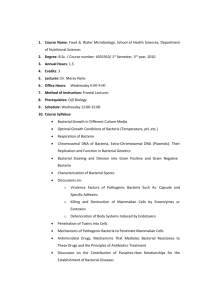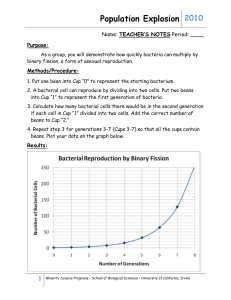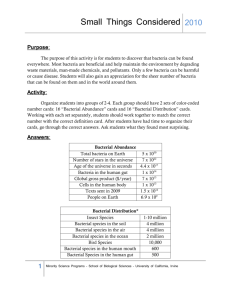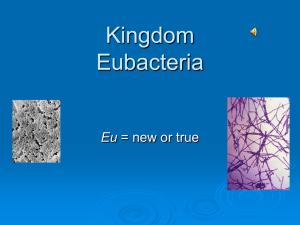More Info
advertisement
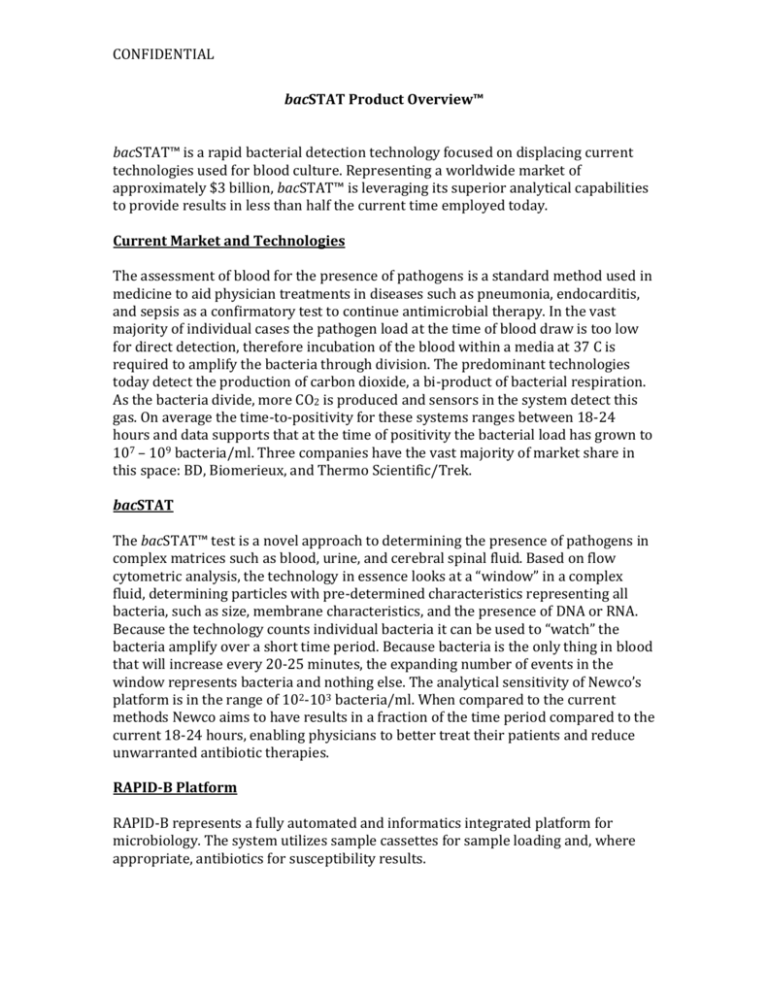
CONFIDENTIAL bacSTAT Product Overview™ bacSTAT™ is a rapid bacterial detection technology focused on displacing current technologies used for blood culture. Representing a worldwide market of approximately $3 billion, bacSTAT™ is leveraging its superior analytical capabilities to provide results in less than half the current time employed today. Current Market and Technologies The assessment of blood for the presence of pathogens is a standard method used in medicine to aid physician treatments in diseases such as pneumonia, endocarditis, and sepsis as a confirmatory test to continue antimicrobial therapy. In the vast majority of individual cases the pathogen load at the time of blood draw is too low for direct detection, therefore incubation of the blood within a media at 37 C is required to amplify the bacteria through division. The predominant technologies today detect the production of carbon dioxide, a bi-product of bacterial respiration. As the bacteria divide, more CO2 is produced and sensors in the system detect this gas. On average the time-to-positivity for these systems ranges between 18-24 hours and data supports that at the time of positivity the bacterial load has grown to 107 – 109 bacteria/ml. Three companies have the vast majority of market share in this space: BD, Biomerieux, and Thermo Scientific/Trek. bacSTAT The bacSTAT™ test is a novel approach to determining the presence of pathogens in complex matrices such as blood, urine, and cerebral spinal fluid. Based on flow cytometric analysis, the technology in essence looks at a “window” in a complex fluid, determining particles with pre-determined characteristics representing all bacteria, such as size, membrane characteristics, and the presence of DNA or RNA. Because the technology counts individual bacteria it can be used to “watch” the bacteria amplify over a short time period. Because bacteria is the only thing in blood that will increase every 20-25 minutes, the expanding number of events in the window represents bacteria and nothing else. The analytical sensitivity of Newco’s platform is in the range of 102-103 bacteria/ml. When compared to the current methods Newco aims to have results in a fraction of the time period compared to the current 18-24 hours, enabling physicians to better treat their patients and reduce unwarranted antibiotic therapies. RAPID-B Platform RAPID-B represents a fully automated and informatics integrated platform for microbiology. The system utilizes sample cassettes for sample loading and, where appropriate, antibiotics for susceptibility results. CONFIDENTIAL Market Landscape The market opportunity for a rapid technology aimed at bacterial detection in blood is substantial. The company feels that RAPID-B’s analytical sensitivity will translate into both general bacterial presence results AND drug susceptibility results in under 6 hours, which in todays technology landscape is a game changing approach to the detection of bacteria in blood samples. Currently this aspect of microbiology is performed using CO2 sensing technologies represented by BD, Biomerieux, and Thermo Scientific/ TREK. Current workload involves primary sample processing,, plating upon “beep” positive samples, and colony picking after incubation. Estimates on lab expense are in the range of $40-60/sample, which includes disposables and labor expenses. At this point in time the RAPID-B technology is not focusing on speciation. Current technologies involved in this aspect of microbial identification include MALDI-TOF (Biomerieux, Brucker), PCR enabled MALDI-TOF (Abbott/Iridica), PCR (Cepheid, Roche, BD), and traditional Gram staining with chemical analysis. Market analysis has determined that antibiotic susceptibility testing (AST) is the primary piece of useful information coveted by acute care clinicians. The investment value of rapid AST can be seen in the market cap of Accelerate Diagnostics, valued at over $1B prior to FDA approval. The company is convinced that the RAPID-B AST approach is more accurate, faster, and more comprehensive than Accelerate Dx approach.






